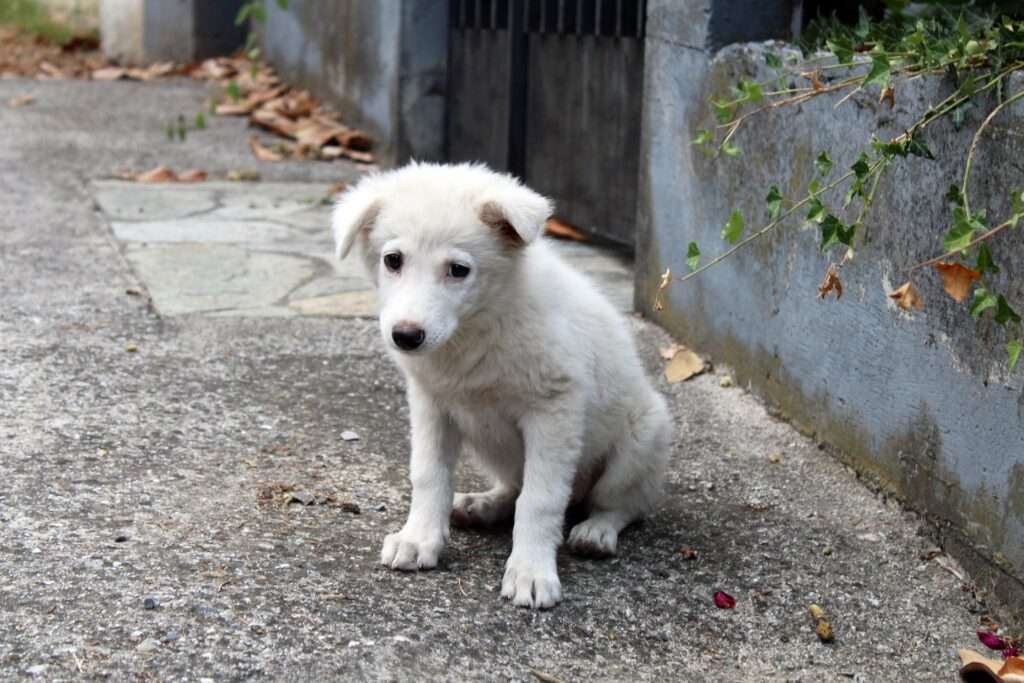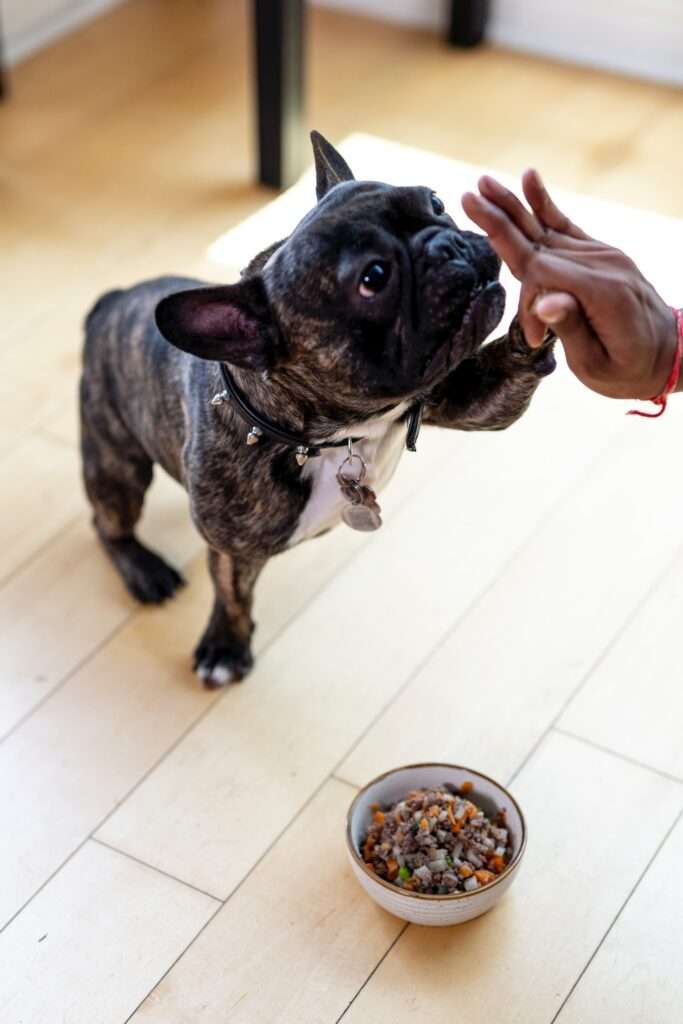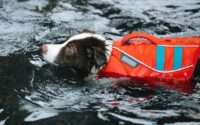How Long Can a Dog Go Without Eating? What Every Pet Owner Should Know
As fellow canine owners, it is important for us to prioritize the health and happiness of our furry friends. One way we can do that is by focusing on their nutrition. However, what happens if your dog stops eating? Therefore understanding how long can dogs go without food and the potential risks of starvation that comes with it is important.
In this article, we will explore the science behind dog nutrition, how long can a dog go without food, and the signs of appetite loss in dogs. Additionally, we will provide tips for encouraging your dog to eat, medical treatments for appetite loss, and prevention strategies for maintaining a healthy dog.
The purpose of this article is to provide guidance to dog owners who may be worried about their pet’s appetite and want to ensure they are providing optimal care. Nonetheless, it’s crucial to bear in mind that seeking advice from a veterinarian is always advisable if you have concerns about your dog’s health.
The Science Behind Dog Nutrition
Understanding the fundamentals of dog nutrition is essential before exploring how long a dog can go without food. Just as humans require a balanced diet to stay healthy, it is crucial to maintain the same for dogs by providing the right amounts of protein, carbohydrates, fats, vitamins, and minerals.
In addition to a balanced diet, water is also an essential component of a dog’s nutrition. It plays a crucial role in regulating body temperature, aiding in digestion, and preventing dehydration. In fact, dogs can only survive a few days without water, making it even more important than food.
Understanding metabolism and energy needs is also important for understanding a dog’s nutritional requirements. Dogs require a greater amount of calories per pound of body weight than humans due to their faster metabolism. This is why dogs often require more frequent meals than humans.
Protein is another essential component of a dog’s diet. It’s required for the growth and repair of tissues, as well as for the production of enzymes and hormones. Most dogs require a diet that contains at least 18% protein.
The dietary needs of dogs can vary based on factors such as their age, weight, and activity level. Ensuring that dogs receive the appropriate quantity of food is imperative for their overall health and wellness. Overfeeding can lead to obesity and related health problems, while underfeeding can result in malnourishment and other serious health concerns.
In summary, understanding the science behind dog nutrition is essential for maintaining a healthy and happy pet. Ensuring a well-balanced diet that contains adequate amounts of protein, carbohydrates, fats, vitamins, and minerals, along with a consistent supply of fresh water, is crucial for maintaining good canine nutrition.
How Long Can a Dog Go Without Food?

With the understanding of the significance of nutrition for dogs, let’s delve into the topic of how long a dog can survive without food. The duration of food deprivation depends on various factors such as the dog’s age, size, and health condition. In general, it’s advised not to allow dogs to go without food for more than five days, although the duration may vary depending on factors mentioned above.
A lack of food can lead to severe health complications in dogs, including liver and kidney damage, muscle loss, and even death. Furthermore, when a dog goes without food for an extended period, their body starts breaking down fat for energy, which can cause toxins to accumulate in their bloodstream.
It’s crucial to keep in mind that if your dog goes without food for over 24 hours, it’s best to have them seen by a veterinarian. Loss of appetite can indicate underlying health issues, such as dental problems, infections, or gastrointestinal problems. Your veterinarian can conduct a physical exam and run tests to identify the root cause of your dog’s lack of appetite.
Signs of Appetite Loss in Dogs
As a responsible and caring dog owner, it is crucial to stay vigilant and recognize the signs of appetite loss in your furry companion. Identifying these signs early on can help you take proactive measures and ensure your dog’s well-being. Here are some common indicators to watch for:
- Refusing to eat or drink: If your usually enthusiastic eater suddenly turns their nose up at their food or water bowl, it may be a sign of appetite loss. Keep an eye out for any prolonged disinterest in meals or water intake.
- Eating less than usual: If your dog is consuming significantly smaller portions than their normal intake, it may be a cause for concern. A noticeable decrease in appetite, without any apparent reasons such as changes in activity level or environmental factors, should be addressed.
- Vomiting or diarrhea: Frequent vomiting or episodes of diarrhea can often coincide with a loss of appetite. If your dog experiences these symptoms alongside a decreased interest in food, it is crucial to consult your veterinarian promptly.
- Weight loss: Unexplained weight loss can be a red flag for appetite loss and potential underlying health issues. Regularly monitoring your dog’s weight and noticing any significant or sudden drops can help detect appetite changes.
- Lethargy: If your typically energetic and playful dog seems unusually tired, lacking energy, or appears lethargic, it could be a sign of appetite loss. Decreased appetite can result in a lack of essential nutrients, leading to decreased energy levels.
- Changes in behavior: Watch for any changes in your dog’s behavior, such as becoming withdrawn, exhibiting signs of discomfort, or displaying unusual restlessness. Behavioral changes can sometimes be linked to appetite loss and should be addressed promptly.
Remember, as a loving dog owner, it is your responsibility to take note of any signs of appetite loss in your dog. If you observe these symptoms persistently or notice any other concerning changes, it is important to consult with a veterinarian. They can provide the appropriate guidance and care to ensure your dog’s health and happiness.
Tips for Encouraging Your Dog to Eat
Encouraging your beloved pup to eat can sometimes be a challenge, but fret not! There are several effective strategies you can try to make mealtime more enticing and enjoyable for your furry friend. Here are some helpful tips to inspire your dog’s appetite:
- Offer a variety of foods: Keep mealtime interesting by incorporating different types of food into your dog’s diet. Consider rotating between high-quality kibble, wet food, and even some healthy homemade options (following your vet’s recommendations, of course). This variety can prevent mealtime monotony and pique your dog’s interest.
- Warm up their food: Just like we humans savor warm, comforting meals, dogs can find warm food more appealing too. Gently heat up your pup’s food to release enticing aromas, making their meal all the more enticing. Remember to check the temperature to ensure it’s safe for them to enjoy.
- Feed smaller, more frequent meals: If your dog seems overwhelmed by large portions, try breaking their meals into smaller, more manageable servings throughout the day. This approach can make mealtime less intimidating and increase their willingness to eat.
- Add flavor: A dash of flavor can work wonders in enticing your dog’s taste buds. Consider adding a small amount of low-sodium chicken broth or mixing in a spoonful of canned dog food to their kibble. These little additions can make their meal more enticing and flavorful.
- Make mealtime enjoyable: Creating a peaceful and positive environment during mealtime can greatly impact your dog’s appetite. Find a quiet and calm spot for their meals, away from distractions. Show them love and attention, praising them with gentle words and gentle pets while they eat. This positive association can help make mealtime a delightful experience for your pup.
By implementing these tips and paying attention to your dog’s individual preferences, you can encourage a healthy and enjoyable eating routine for your furry companion. Remember, if your dog’s appetite concerns persist despite your efforts, consulting with your veterinarian is essential. They can provide further guidance and may recommend medical treatments, such as appetite stimulants or nutritional support, if necessary.
Medical Treatments for Loss of Appetite in Dogs
When it comes to addressing your furry friend’s loss of appetite, there are medical treatments that your trusted veterinarian may suggest to stimulate their desire to eat. These treatments can play a vital role in getting your pup back on track. Here are some common medical interventions for loss of appetite in dogs:
- Appetite stimulants: Under the expert guidance of your veterinarian, appetite stimulant medications may be prescribed to help spark your dog’s interest in food. These medications work by boosting their appetite, but it’s important to note that they may come with potential side effects. Your vet will carefully consider your dog’s individual health and needs before recommending such treatments.
- Nutritional support: To ensure your dog receives the essential nutrients they need, your veterinarian may recommend a prescription diet or nutritional supplements. These specialized diets and supplements are formulated to provide the necessary nourishment, even if your pup is experiencing a decreased appetite. Following your vet’s guidance on feeding and supplementation is crucial for your dog’s well-being.
- Anti-nausea medications: If your dog is battling vomiting or experiencing nausea, your veterinarian may prescribe medications to help alleviate these symptoms. By addressing these discomforts, the anti-nausea medications can help restore your pup’s appetite, making mealtimes more enjoyable for them.
- Treatment for underlying health conditions: Sometimes, loss of appetite in dogs can be a result of underlying health conditions, such as dental problems or gastrointestinal issues. In such cases, your veterinarian will focus on treating these specific conditions to alleviate any discomfort and, subsequently, improve your dog’s appetite. Following the recommended treatment plan will aid in restoring their desire to eat.
Always remember that a loss of appetite in dogs can be an indication of a more serious health issue. Prompt action and seeking veterinary care are essential for a thorough examination and accurate diagnosis. Delaying treatment can potentially lead to further complications.
Preventing Loss of Appetite in Dogs

Preventing a loss of appetite in your furry companion is key to keeping them happy and healthy. By taking proactive measures, you can help ensure that your dog maintains a strong and consistent appetite. Here are some helpful tips to keep your pup’s appetite thriving:
- Stick to a regular feeding schedule: Establishing a consistent feeding routine plays a crucial role in regulating your dog’s appetite. Stick to a regular schedule for meals, offering them at the same times each day. This consistency helps your pup anticipate and look forward to their meals, promoting a healthy appetite.
- Avoid table scraps and human food: While those puppy-dog eyes may tempt you to share your meal, it’s best to resist the urge. Feeding your dog table scraps or human food can disrupt their digestive system and lead to a loss of interest in their regular food. Stick to a balanced and nutritionally complete diet designed for dogs to keep their appetite strong.
- Provide plenty of fresh water: Just like us, dogs need access to clean and fresh water throughout the day. Adequate hydration is essential for maintaining their appetite and overall health. Make sure your pup always has a fresh supply of water available in a clean bowl. Regularly check and refill the water to ensure they stay properly hydrated.
- Keep up with regular veterinary check-ups: Regular visits to the veterinarian are crucial for your dog’s well-being. These check-ups help detect any underlying health conditions early on, preventing them from causing a loss of appetite. Your vet can provide preventive care, address any concerns, and offer advice tailored to your dog’s specific needs.
A healthy appetite is a reflection of your dog’s overall wellness. By establishing a consistent feeding schedule, avoiding table scraps, providing fresh water, and staying on top of regular vet visits, you can help keep your pup’s appetite strong and ensure they enjoy a long and vibrant life.
Conclusion
In the world of pet ownership, a dog’s loss of appetite can stir up worry and stress. But fear not, devoted pet parent! By staying informed about the common culprits behind a decrease in appetite and taking proactive measures, you can ensure your pup’s overall well-being and keep their tail wagging with delight.
Remember, when in doubt, seek the expert advice of a trusted veterinarian. These dedicated professionals are equipped to address any concerns you may have about your furry friend’s health or eating habits. Don’t hesitate to reach out for the guidance your pup deserves.
Providing your beloved companion with the right blend of nutrition, care, and love is the key to a fulfilling and vibrant life. By prioritizing their well-being, you can nurture their appetite and watch them thrive. So, keep those doggy smiles beaming by being proactive, informed, and always ready to lend a helping paw.
Together, we can ensure that your dog enjoys a long, happy, and healthy journey by your side. Let’s embark on this adventure of pet parenthood, armed with knowledge and love for our four-legged family members. They rely on us, and we’re here to deliver!
Frequently Asked Questions
Q: How long can a dog go without eating?
A: A healthy dog can typically go without eating for about 3 to 5 days. However, it’s important to note that each dog is unique, and the duration may vary based on factors such as age, breed, overall health, and individual metabolism.
Q: How long can a dog go without water?
A: Dogs need access to fresh water at all times, and they can become dehydrated quickly. As a general guideline, a healthy dog can typically survive without water for about 2 to 3 days. However, the actual duration may vary depending on factors such as the dog’s size, age, activity level, and environmental conditions.
Q: What are the signs that my dog is not eating enough?
A: If your dog is not eating enough, you may notice a decrease in appetite, weight loss, lethargy, weakness, or a change in behavior. It’s essential to monitor your dog’s eating habits and consult a veterinarian if you have concerns about their appetite.
Q: What are some common reasons why a dog may stop eating?
A: There can be several reasons why a dog may stop eating, including illness, dental problems, digestive issues, changes in the environment or routine, stress, medication side effects, or a dislike for the current food. If your dog refuses to eat for more than a day or two, it’s important to consult a veterinarian to determine the underlying cause.
Q: Should I be concerned if my dog skips a meal or two?
A: Skipping a meal or two may not be a cause for immediate concern, as some dogs may have occasional fluctuations in their appetite. However, if your dog continues to refuse food beyond a day or shows other signs of illness, it’s advisable to seek veterinary attention.
Q: How can I encourage my dog to eat when they’re not interested in food?
A: If your dog is not interested in eating, you can try offering them a different type or brand of food, warming the food to enhance its aroma, hand-feeding small portions, or adding a tasty topper such as cooked chicken or low-sodium broth. If the problem persists, consult with your veterinarian for further guidance.
Q: Can a dog survive without eating for an extended period?
A: While dogs can survive without eating for a few days, it is not recommended to allow them to go without food for an extended period. Prolonged fasting can lead to serious health complications, such as organ damage, muscle loss, and weakened immune function. If your dog consistently refuses food or goes without eating for more than a couple of days, it’s crucial to seek veterinary assistance.
References
- National Research Council. (2006). Nutrient Requirements of Dogs and Cats. Washington, DC: The National Academies Press.
- Case, L. P., Daristotle, L., Hayek, M. G., & Raasch, M. F. (2011). Canine and Feline Nutrition: A Resource for Companion Animal Professionals. St. Louis, MO: Mosby.
- Larsen, J. A., & Farcas, A. K. (2014). Nutrition of aging dogs. Veterinary Clinics of North America: Small Animal Practice, 44(4), 741-759.
- Thatcher, C. D., Hand, M. S., Remillard, R. L., & Roudebush, P. (Eds.). (2010). Small Animal Clinical Nutrition. Topeka, KS: Mark Morris Institute.
- Wakshlag, J. J. (2012). Canine and feline exercise physiology: A foundation for understanding the role of physical activity in companion animals. Journal of Comparative Physiology B, 182(2), 179-190.
Please note that the information provided above is based on general knowledge and should not replace professional veterinary advice. For specific concerns about your dog’s nutrition or health, consult with a qualified veterinarian.







